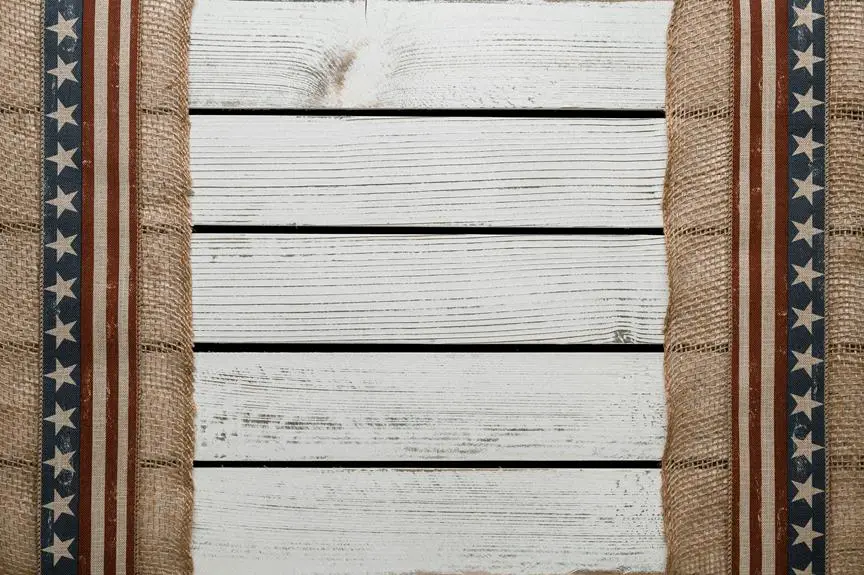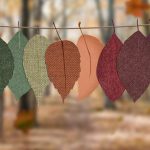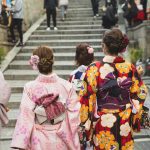You might be surprised to learn that damask fabric, with its intricate patterns and luxurious texture, traces its roots back to ancient Damascus in the 12th century. Initially crafted by skilled artisans, this fabric became a symbol of nobility and sophistication. As trade routes expanded and technology advanced, damask evolved significantly, especially with the introduction of Jacquard looms. This evolution not only transformed its production but also its place in fashion and decor. What's even more fascinating is how its legacy continues to influence modern trends today.
Table of Contents
Origins in Ancient Damascus
Damask fabric traces its roots back to ancient Damascus, where skilled artisans wove intricate patterns that still captivate us today. You might be amazed to learn that this luxurious textile emerged around the 12th century, combining silk with other fibers to create a stunning interplay of light and texture. The city's strategic location along trade routes allowed it to thrive as a hub for textile production, attracting artisans who perfected their craft.
As you explore the history of damask, you'll notice that its distinctive reversible patterns are created using a unique weaving technique. This method not only showcases the beauty of the fabric but also speaks to the artisans' expertise. You can imagine how these exquisite textiles adorned the palaces and homes of nobility, serving both functional and decorative purposes.
The influence of damask extended beyond its origins, inspiring other cultures to adopt and adapt the technique. Whether it's the elaborate brocades of Europe or the elegant designs found in Asia, the legacy of Damascus artisans endures. This rich history is what makes damask fabric a cherished choice for both contemporary and traditional decor.
Evolution Through the Ages
Over the centuries, the artistry of damask fabric has evolved, incorporating new techniques and materials that reflect changing tastes and technologies.
In the medieval period, artisans began using loom innovations, allowing for more intricate patterns and textures. As trade routes expanded, silk became a prominent material, elevating damask's status and appeal among the elite.
During the Renaissance, you'd see damask fabrics flourish in Europe, where elaborate designs found their way into home décor and fashion. The introduction of Jacquard looms in the early 19th century revolutionized production, making complex patterns more accessible and affordable. This shift allowed damask to penetrate middle-class households, leading to a wider variety of designs.
In the 20th century, synthetic fibers emerged, providing durability and ease of care, which attracted a new generation of consumers. Today, you can find damask fabric in everything from upholstery to wedding gowns, showcasing its versatility.
Each era imbued the fabric with its unique flair, allowing damask to adapt while staying true to its rich heritage. As styles continue to change, you can expect damask to evolve further, blending tradition with modern aesthetics.
Cultural Significance and Symbolism
Throughout history, cultures have embraced damask fabric not just for its beauty, but also for the rich symbolism it carries in various ceremonies and traditions. When you think of damask, you might picture opulent table settings or elegant clothing, but it also represents status, wealth, and artistry.
In many cultures, using damask during important events signifies honor and distinction. For instance, in weddings, damask often adorns the halls and tables, symbolizing prosperity and a bright future for the couple. You might notice its presence in religious ceremonies too, where it drapes altars or sacred spaces, reflecting spirituality and reverence.
Moreover, in heraldry, damask patterns can signify family lineage and heritage, adding depth to its cultural significance. When you choose damask for your own decor or fashion, you're not just opting for a fabric; you're embracing a tapestry of meaning that connects to history and tradition.
Its intricate designs often tell stories of the weavers' craft and cultural narratives, making your choice a reflection of appreciation for artistry and symbolism.
Techniques of Damask Weaving
Various techniques of damask weaving have evolved over centuries, showcasing the intricate artistry and craftsmanship involved in creating this luxurious fabric.
You'll discover that damask weaving primarily utilizes a Jacquard loom, which allows for complex designs by controlling multiple threads simultaneously. This innovation revolutionized the process, enabling weavers to produce elaborate patterns that were once painstakingly crafted by hand.
Here are some key techniques you might find interesting:
- Satin Weave: This technique produces a smooth, glossy surface that enhances the richness of the fabric, giving it that characteristic sheen.
- Twill Weave: With its diagonal rib pattern, this technique adds texture and depth, making it ideal for more casual or durable damask fabrics.
Damask in Fashion History
Damask fabric has played a significant role in the evolution of fashion, becoming a symbol of luxury and sophistication from the Middle Ages to modern-day attire. You'll find that this exquisite textile has adorned everything from royal garments to contemporary evening wear. Damask's intricate patterns and rich textures add depth to any outfit, making it a favored choice among designers.
Here's a quick look at key moments in fashion history where damask made an impact:
| Era | Damask's Influence |
|---|---|
| Middle Ages | Worn by nobility; signifies wealth and status. |
| Renaissance | Used in lavish gowns and tapestries; artistic expression. |
| 18th Century | Adorned both men's and women's clothing; symbol of elegance. |
| 21st Century | Featured in haute couture and accessories; timeless appeal. |
As you explore fashion history, you'll see how damask continues to inspire designers, bridging the gap between tradition and modernity. Its ability to transform outfits into statements of elegance keeps it relevant in the ever-evolving world of fashion.
Modern Uses and Trends
Today, you'll find damask fabric not just in haute couture but also in home decor, upholstery, and even tech accessories, reflecting its versatility and enduring popularity. This luxurious fabric has evolved to suit modern tastes while retaining its timeless elegance. You can easily incorporate damask into your life by choosing items that showcase its unique patterns and textures.
Here are some popular modern uses of damask fabric:
- Cushions and Throws: Add a touch of sophistication to your living space with damask-patterned cushions or throws. They can instantly elevate the ambiance of any room.
- Table Linens: Impress your guests with stunning damask tablecloths and napkins. They make any dining experience feel more special, whether it's a casual meal or a formal event.
As you explore these modern applications, you'll appreciate how damask continues to adapt and thrive, proving that traditional elegance can coexist with contemporary design.
Frequently Asked Questions
What Are the Primary Fibers Used in Damask Fabric?
Damask fabric primarily uses silk, linen, cotton, or a blend of these fibers. You'll find silk damask offers luxurious sheen, while cotton variations provide durability, making both popular choices for different applications.
How Is Damask Fabric Different From Other Types of Woven Fabrics?
Damask fabric stands out due to its intricate patterns and reversible designs, created using a specific weaving technique. Unlike simpler fabrics, its rich texture and visual depth make it a luxurious choice for various applications.
Can Damask Fabrics Be Machine Washed?
Yes, you can machine wash damask fabrics, but it's best to use a gentle cycle with cold water. Always check the care label first, as some damask items may require special handling or dry cleaning.
What Are Common Color Choices for Damask Fabric?
When choosing damask fabric, you'll find common color choices like rich reds, deep blues, elegant golds, and soft pastels. These colors enhance the intricate patterns, adding sophistication to any decor or clothing design you create.
Is Damask Fabric Sustainable and Eco-Friendly?
Damask fabric can be sustainable if made from natural fibers like organic cotton or linen. You should check for certifications, as some manufacturers prioritize eco-friendly practices, reducing environmental impact while providing beautiful, long-lasting textiles.
- Tetron Fabric for Marine Applications: Durability and Use Cases - June 18, 2025
- Tetron Fabric for Outdoor Furniture: Weather Resistance and Care - June 18, 2025
- Tetron Fabric for Wall Coverings: Style and Application Tips - June 18, 2025






